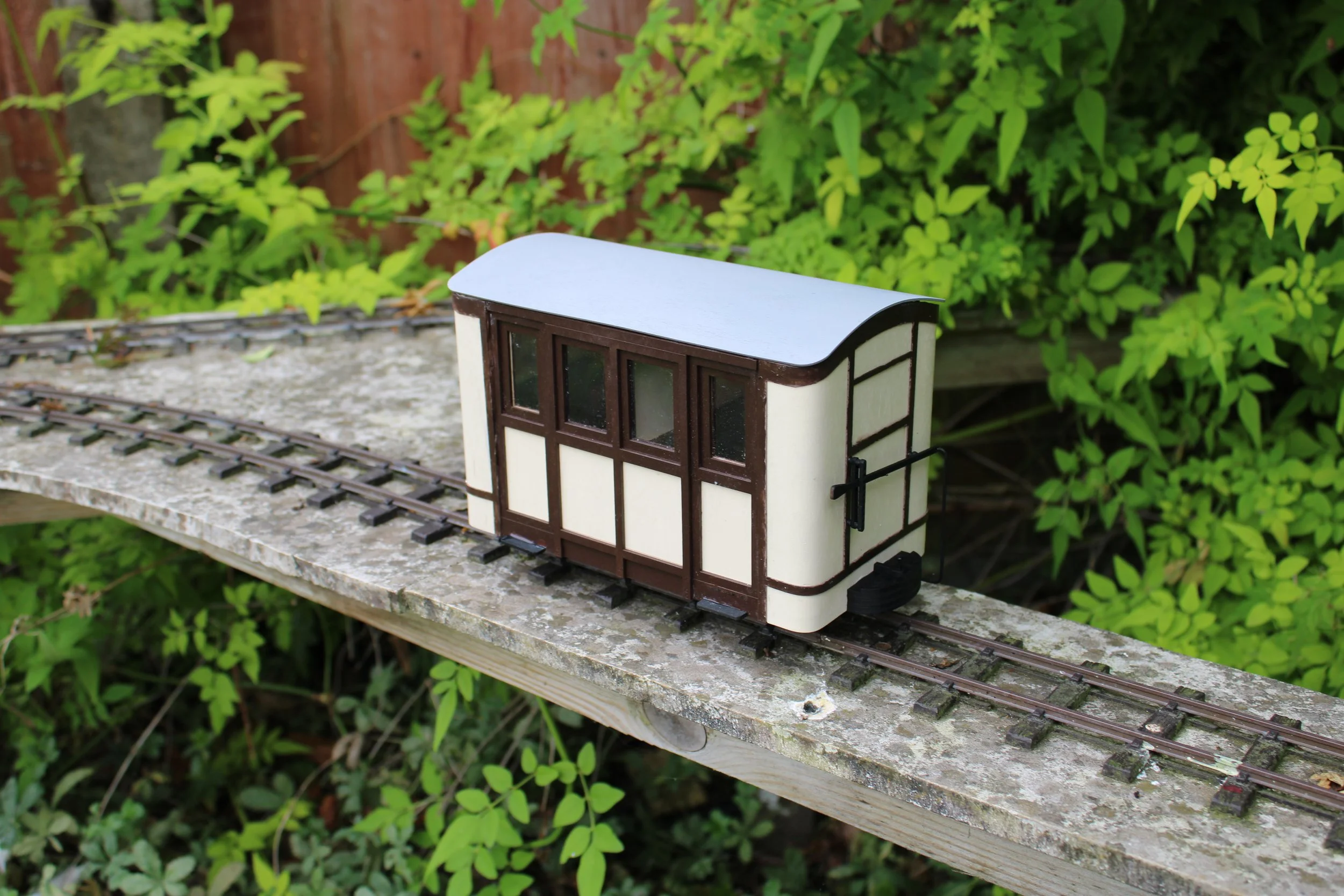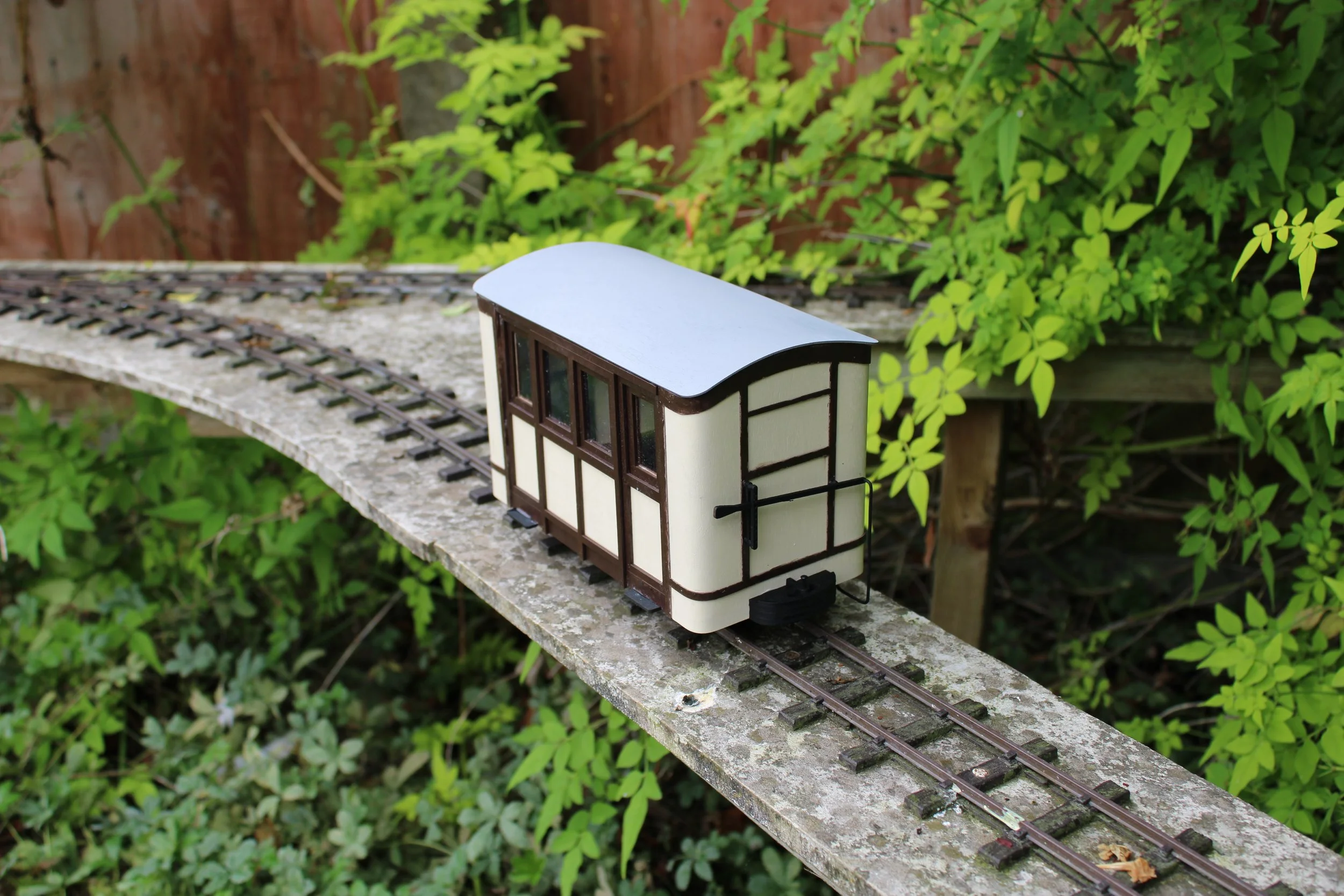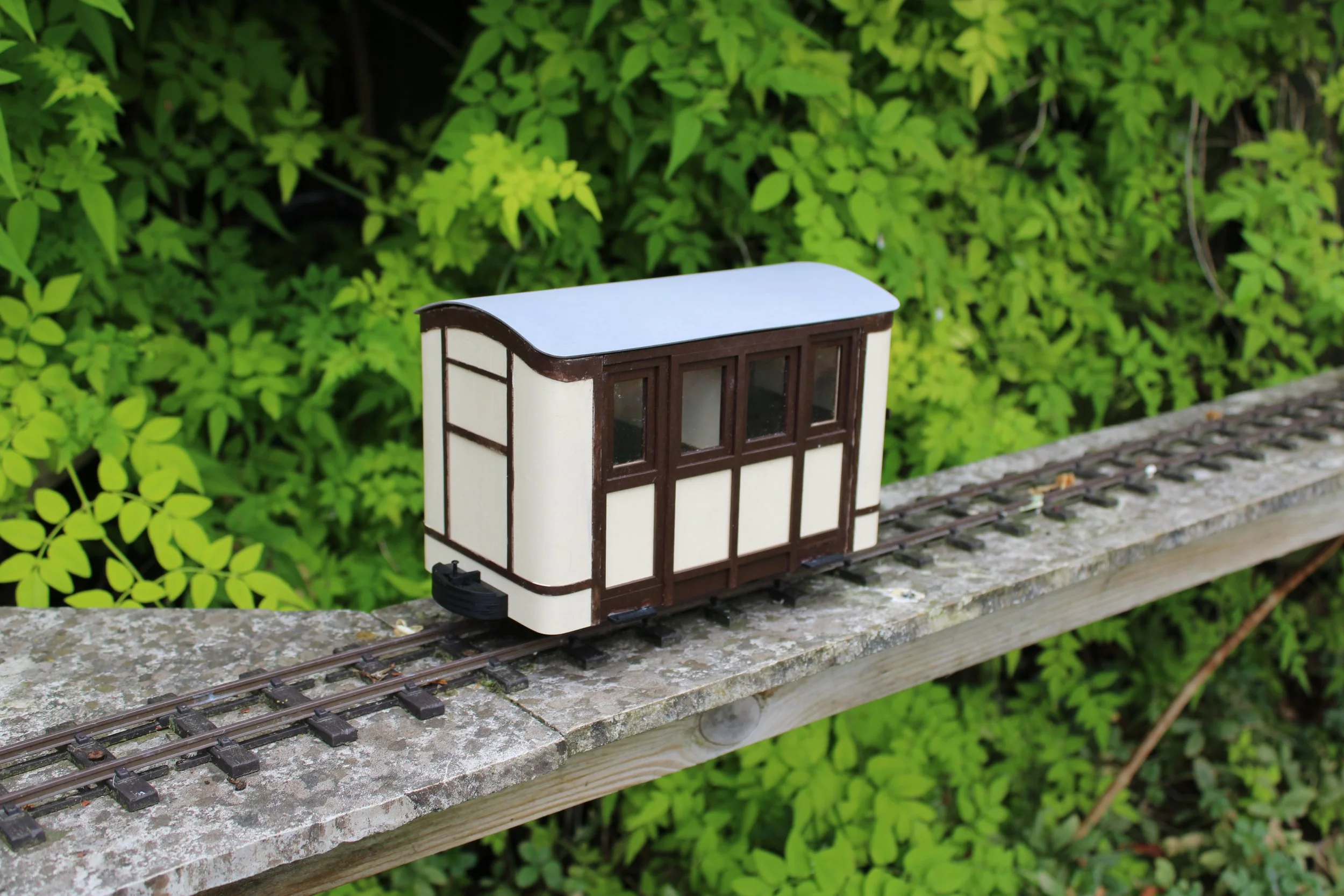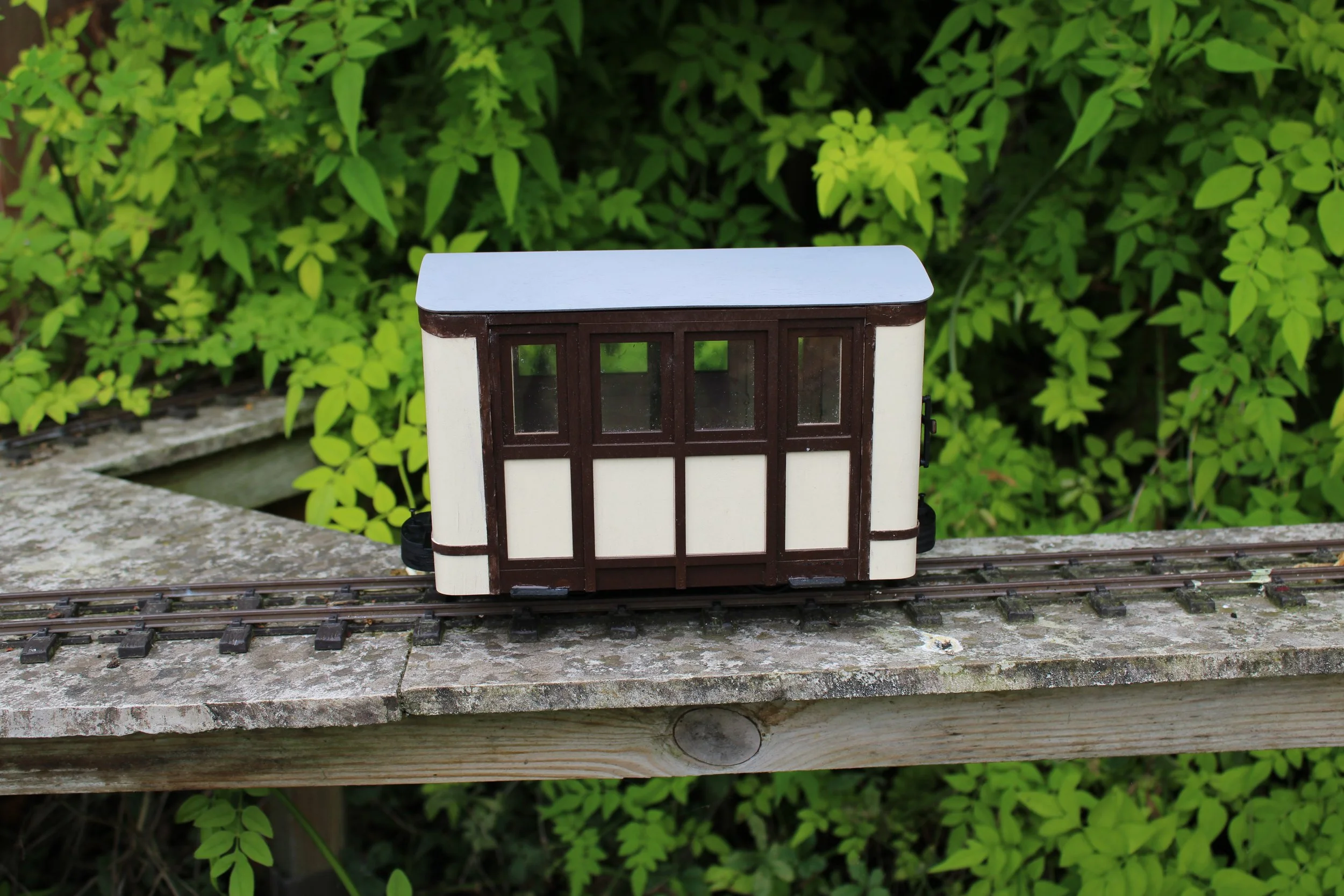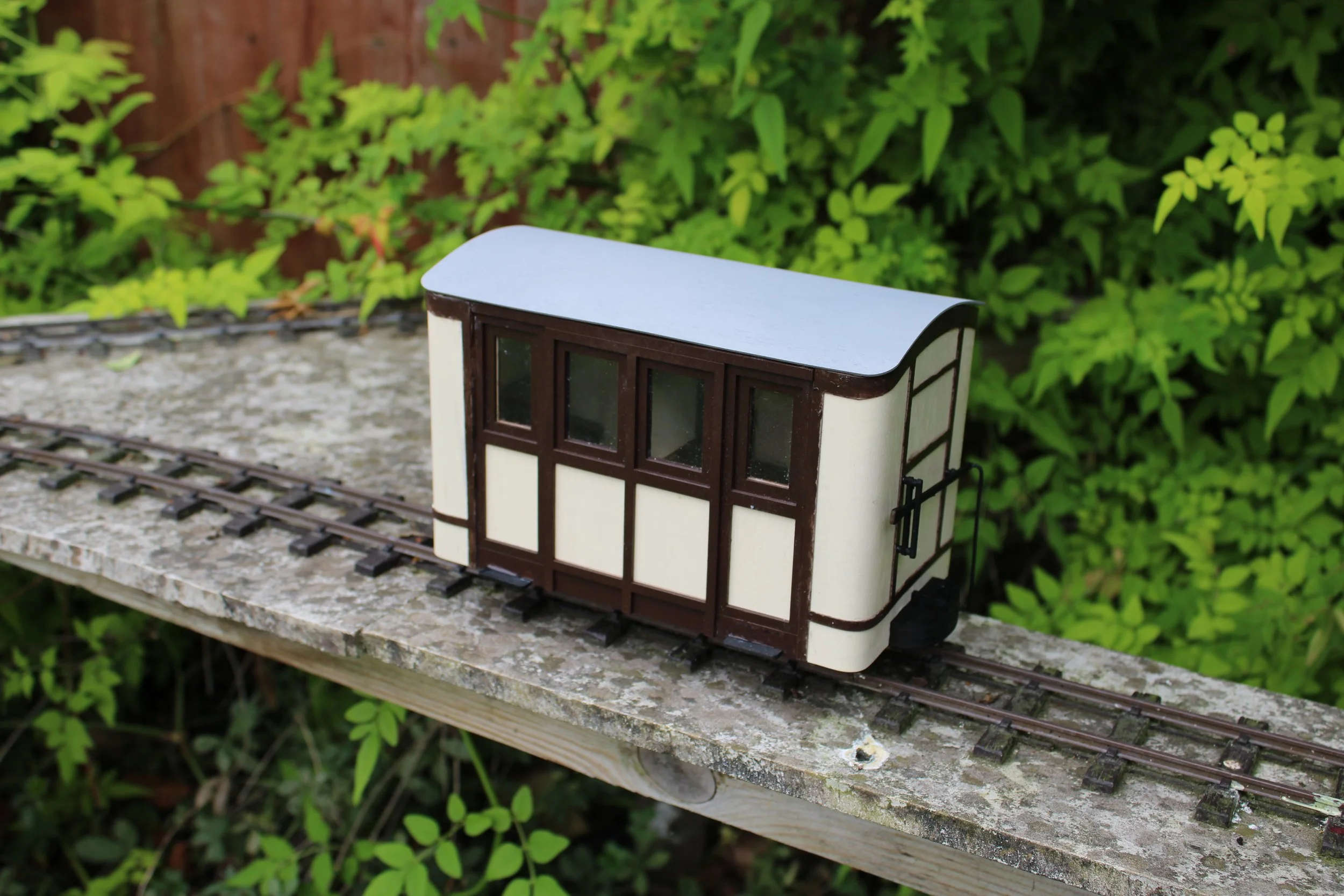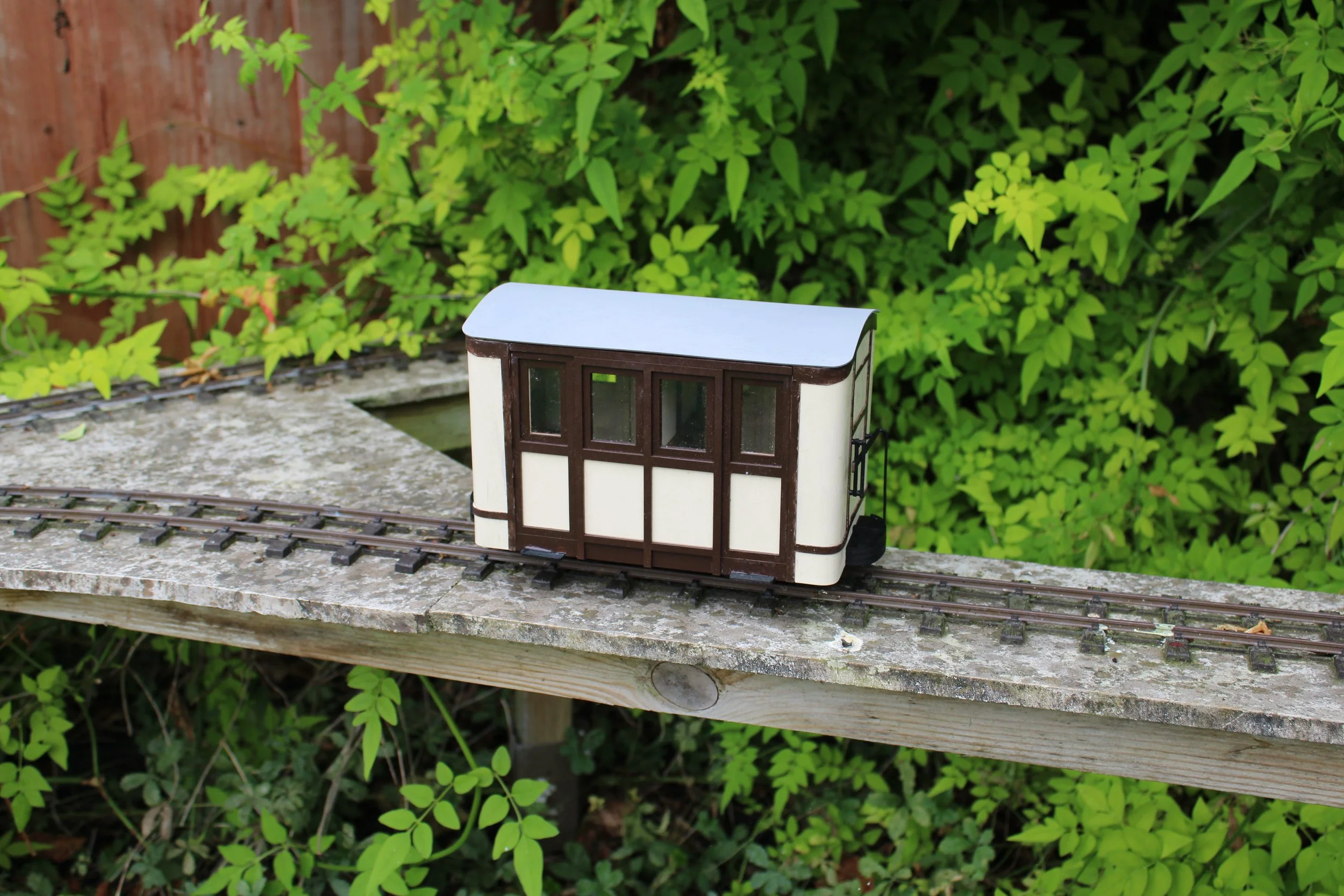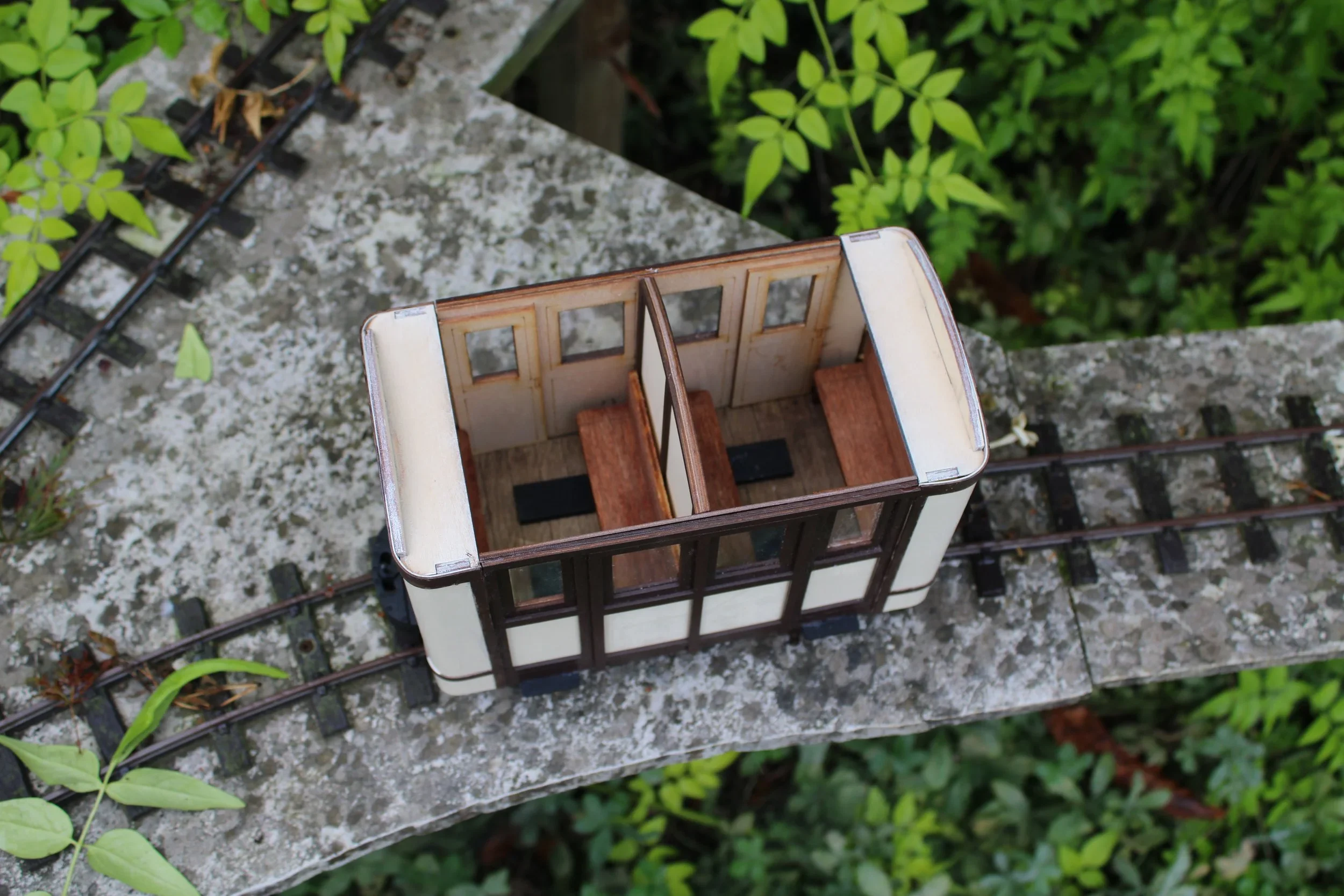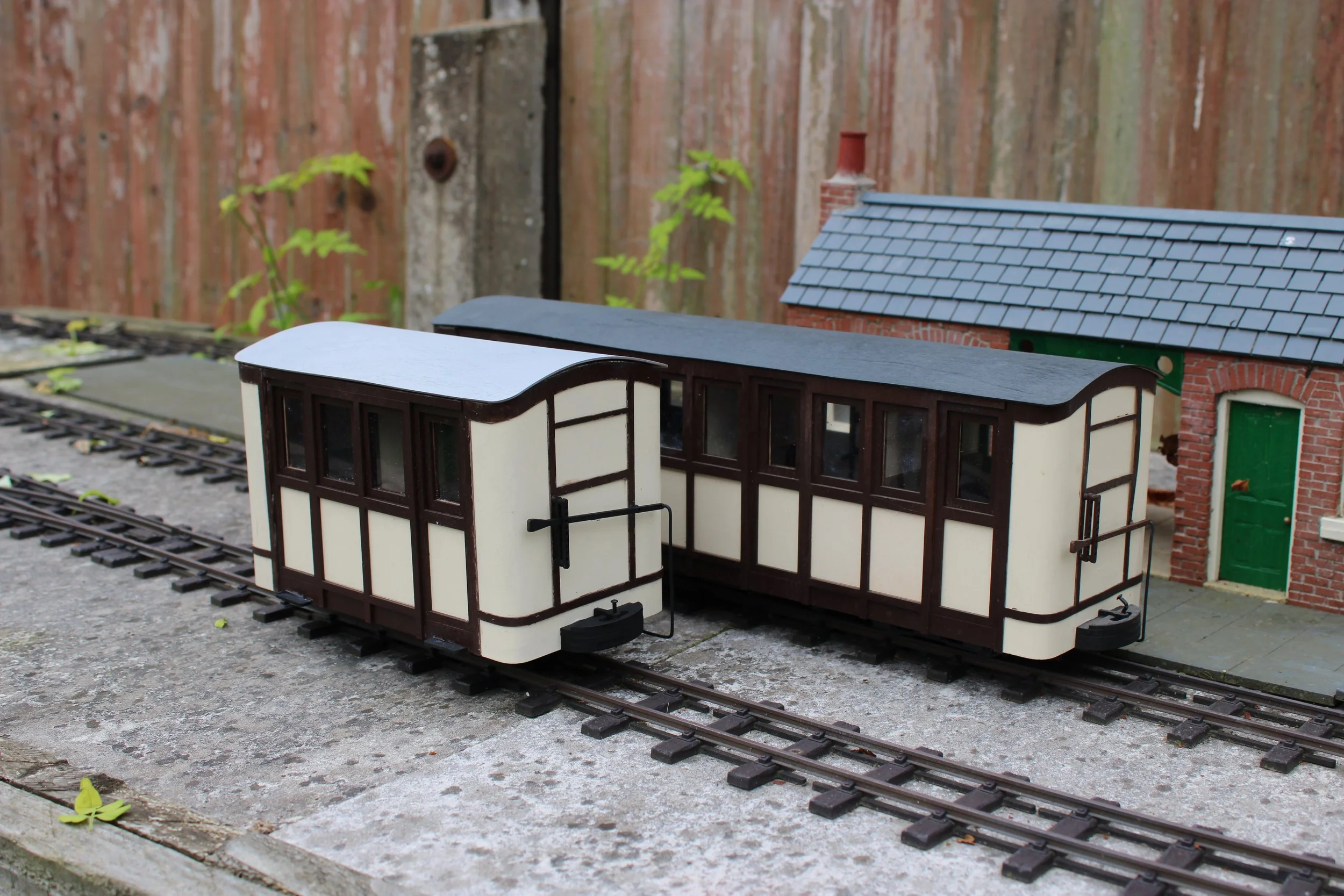The DHR never produced a 4 wheeler of this design having moved to bogie carriages, however other narrow gauge Indian railways did something similar (e.g. Powayan Steam Tramway). Effectively this is a continuation of the 4 wheelers that the DHR had previously used but to the 1906 design.
The models match the large radius corners. Careful scaling has allowed for different layers make up the relief for the various doors, windows, panels, and openings etc. In built tabs and indexing help to ensure parts line up and detailed step by step instructions are included to take the modeller through the entire construction process to produce a complex and rewarding model.
The model is not a overnight build as glue will need to be left to dry and parts painted. The most complex parts are the curved plywood ends, but these are straightforward to make using standard household implements in easy to follow steps. The supplied pre-cut plywood skins being gently heated / simmered in a saucepan, before being pulled out and allowed to cool so that it can then be carefully wrapped around a structural end and held in place with clothes pegs or similar whilst the glue dries and the plywood re-hardens.
Fully constructed from laserply, the kits come with everything apart from glue, paint and decals. 4 Wheeer 185 - 218 mm over buffers, 105 mm wide and 132 mm high.
Four 1st Generation bogie carriages are also offered:
• 1st / 2nd composite, No.74, with central waterproof curtain, arm chair central seating
• 2nd / 3rd composite, No 76, with closed and open compartments
• Guard / Luggage / Open, No 82 guard’s veranda, luggage / freight and three open compartments.
• 4 Compartment Closed, an adaptation or development of the 1st / 2nd composite with the central floor divided into two compartments. Probably offering 1st & 2nd class accomodation.

